Lolita Fashion
Research Question
How familiar is the general public in Belgium with the phenomenon of Lolita fashion and to which extent can they differentiate between various styles, as well as the motivations of those participating in the Lolita lifestyle?
Introduction
As of the last few years, Japanese fashion styles have become a global phenomenon. But since most of these styles have a unique look that doesn't conform to the usual aesthetic that dominant culture promotes, the question arises as to how this alternativeness is perceived by the diverse population of the global village. Where do these styles originate from? How did they become a transnational phenomenon, and are the members of a subculture really accepted or is it still so rare that they are often misunderstood? In this blog, we will dive into a great example of the stereotypically interpreted Japanese "cute" or "kawaii", in the shape of the fashion subculture called Lolita. By analyzing this subculture and its fashion style, we hope to be able to answer some of the previously posed questions and to shine some light on how this specific style is perceived in Belgium.
First, we discuss some general characteristics of the aesthetic and a short overview of some of the academic research done on this topic so far. Secondly, we explain how the subculture came to be and how it was transferred to the rest of the world, including Europe. Lastly, we add our own small research survey and conclusions on how people in Belgium might interpret the style and the reasons for why people would want to engage in this fashion trend.
Let's start by talking about what Lolita actually means. Lolita fashion is the name given to an aesthetic, which is inspired by Western Victorian-age dolls, with influences of the Rococo period. What this means in terms of visual characteristics is: highly feminine dresses with a voluminous skirt. Generally these dresses are covered from head to toe in frills, ribbons or lace. Lolita's (people who dress in this style) also often combine this with high socks and carry accessories such as plushies, hats or cute umbrellas. According to Lolita's themselves, it is not to be confused with cosplay, as with cosplay, one aims to become a fictional character. However, as a Lolita, you aim to find your own ideal identity. They do this by dressing in frilly dresses that they buy online or often make themselves and assume mannerisms, poses and frequently a different language style.
Status Quaestionis
Despite the fact that this fashion style is becoming more and more popular globally, the amount of research on the topic is extensive, yet in our opinion oddly undiversified in areas of research. It has been suggested [1] that the research on Lolita can be divided into historical research, research with a focus on sociology and/or gender studies and papers with a focus on the effect of the globalization. The research we have found is mostly a combination of all three. By combining these elements, they seem to look for a meaning or understanding of the subculture that goes beyond the description of the look and mannerisms that are associated with it. On top of that, the interpretation of the general public doesn't always coincide with popular interpretation, so most papers also explore the possible dangers of misinterpretations, such as cyberbullying. The only difference between papers is the subtle approach on defining the meaning and what consequences that holds. While a lot of articles focus on the meaning of Lolita in a specific geographic area [2,3,4], others will focus on the consequences of the virtual space that is created by the online aspect of the subculture [5,6] and some will focus on the mannerisms or the linguistic side. As a side track, the fashion style has also been mentioned in research on modesty in feminism [7]. Now, does the research we have found still come to similar conclusions? The answer is yes: all research we could find considers Lolita as a subculture that finds empowerment in anachronistically displaying a common, feminine and childlike style as a way to escape and criticize the dominant culture's ideals of how people should be, act and dress. However, due to the name of the subculture, the aesthetic in combination with the virtual space where a lot of the Lolita's find comfort and a common positive spirit, there are still many misconceptions that can lead to cyberbullying and other negative consequences.
So where can we add to all of this research? While we will also focus on a specific geographic area, i.e. Belgium, we hope to add some insight in how the Lolita aesthetic is perceived by a more diverse audience of people who don't necessarily associate with the subculture. We hope this might give an interesting perspective, since we could also spot a lot of similarities in research style within the research we have found. While most researchers get their information from interviews and observations (some first-hand ethnographic observations, for example the research of Rahma, Wing-sun, Lam and Mong-tai 2011) [4], all do so with a focus on the interpretation of the subculture from the point of view of the Lolita's themselves. This is of course logical from an academic point of view of wanting to understand the underlying motives. However, we would like to explore the opinions and often prejudice from the perceiving rather than the partaking side of this subculture.
Sources
- https://www.academia.edu/19955055/Rebels_in_Frills_a_Literature_Review_on_Lolita_Subculture
- https://www.semanticscholar.org/paper/Japanese-popular-culture-in-Latvia%3A-Lolita-and-Mori-Haijima/f6e85bfbbf5d793da387f00b020a4c85f1830bd0#paper-header
- https://www.semanticscholar.org/paper/Kawaii-as-Represented-by-Wearers-in-France-Using-of-Koma/64740570150a131fc7256d2ca6deaf115cc4a68d
- https://doi.org/10.2752/175174111X12858453158066
- www.jstor.org/stable/41510902
- https://www.jstor.org/stable/10.5325/jasiapacipopcult.1.1.0079
- https://www.jstor.org/stable/41819649?seq=1
- https://scholar.harvard.edu/files/younker/files/lolita_-_dreaming_despairing_defying.pdf
- https://www.academia.edu/12302374/Frills_and_Thrills_Lolita_fashion_explained
- https://ijoc.org/index.php/ijoc/article/view/1333
- https://doi.org/10.1111/j.1548-1395.2008.00006.x
- https://doi.org/10.1017/S0040557418000522
- https://www.researchgate.net/publication/280083835_The_Nationality_of_Lolita_Fashion
History and development of Lolita in Japan
Timeline
Most of us have a certain perception of the phenomenon of Lolita fashion. According to our survey most of us know at least some common styles of the Lolita fashion. But what most of us don't know is how this subculture emerged and where it came from. Therefore, we want to give you a short introduction on the history of Lolita fashion as well as how and where it emerged. The term 'Lolita' was first introduced in the novel of the Russian writer Vladimir Nabokov 'Lolita' published in 1955. It's important to realise that although the famous book and the subculture of Lolita fashion share the same name they have nothing in common with each other. While the book is known for its controversy, as an 'erotic novel', many tend to project that stigma on Lolita fashion, which is a Japanese phenomenon and has its own unique cultural as well as historical context. By analyzing different sources it becomes evident that the origin of this subculture is rather unclear. Although the exact date is unknown, we can state that Lolita fashion was influenced by the so called 'kawaii' culture that emerged in Japan during the '70s. At the end of the '70s the so called 'Otome-kei' movement emerged (otome means maiden). Since the maiden style looks a bit like a less elaborated lolita style, it slightly influenced the phenomena of Lolita fashion as well. When the 'craze for kawaii' became mainstream in the '80s Japan, a result of that was that the DIY (do-it-yourself) style gained popularity as well, which led to the Doll-style, the predecessor of the, not yet known, Lolita fashion.
Starting from the late '80s till the beginning of the 2000s, a part of the Harajuku, a district in Tokyo, was closed for cars on Sundays.That encouraged brands like 'Pink House' (which still exist today), 'Milk', and others to begin selling new cute clothing.This was not yet the Lolita fashion itself, however it was definitely the start of it. The girls who eagerly participated in the new fashion trends called themselves the 'Olive Girls', inspired by the fashion magazine 'Olive', that was popular at the time. The 'Nagomu Girls' followed, the new term referred to the fans (girls) of artists signed under the Nagomu records label. Those girls wore imposant clothes and made their own contribution to the Lolita fashion of today.
In the '90s Lolita became more commonly known and accepted. This mainly happened thanks to the popularity of Visual kei rock bands such as Malice Mizer. The influence of these bands was drastic for the spread of Lolita, both throughout and beyond Japan. Unique fashion trends (often over the top), feminine makeup, etc., all contributed to the gothic Lolita fashion (as well as other styles like Fairy Kei and Decora). At the same time Japan experienced a challenging period of economic depression, which led to a rise in alternative youth and fashion cultures, such as gyaru, otaku and, of course, Lolita. The Harajuku shopping district (which was free of cars) became a meeting spot for those who were into Lolita fashion, as well for those who wore other alternative fashion. Lolita became more and more popular. Popular fashion magazines at the time such as 'Kera' started running more lolita fashion street snaps and undoubtedly contributed greatly to the spread of the Lolita fashion as well.
In 2004, the iconic movie 'Kamikaze Girls' (based on the light novel of Novala Takemoto) was released, bringing the already popular Japanese fashion, to a whole new international level. The Japanese government tried to popularize the Lolita fashion as well. In 2009 the so-called 'cute ambassadors' (Kawaa Taishi) were introduced by the Ministry of Foreign Affairs to spread Japanese pop culture. However, even without the help of the government the Lolita fashion spread throughout the world, together with other Japanese 'popular culture', that was rapidly spreading because of the internet, manga, cultural goods (such as Hello Kitty), anime, etc.
Sources
- https://haenfler.sites.grinnell.edu/subcultures-and-scenes/lolita/
- http://asianbeat.com/en/feature/issue_lolita/history.html
- https://www.rebelsmarket.com/blog/posts/lolita-fashion-what-is-it-and-where-did-it-come-from
- http://asianbeat.com/en/feature/issue_lolita/history.html
Expansion of the Lolita subculture to the west (Europe)
2014 Documentary of Lolita in Amsterdam
Lolita can be seen as both European and Japanese, since the clothing is heavily inspired by European 19th century fashion. Lolita fashion is intricate, layered, and visually modest, a version of femme hood that doesn't hinge on sexual maturity, or traditional notions of (straight male-centric) sexuality.
The 90s
The origin of Japanese influence can be found in the late 90s when culture goods and translation of manga made an appearance in the west. Anime and other Japanese cultural merchandise like Hello Kitty became popular in the West, which helped spread Japanese culture overseas, and lead to people becoming more interested in Japan.
A possible reason for the popularity of Lolita fashion is the increase of internet use for sharing information and worldwide shopping. This gives the foreign Lolita's a huge window of information about Lolita style and the opportunity to buy and own such clothing. Lolita fashion became more accessible, leading to Western youth becoming more interested in this subculture and wanting to try it themselves.
Early and mid 2000s
Lolita fashion popularity peaked in the early to mid-2000s due to the crossover medium of "Visual Kei" bands, such as Novala Takemoto, which brought with them a melange of gothic, aristocratic, and heavy metal aesthetic influences Gothic Lolita style.
Another influence was the book Kamikaze Girls (2002) written by Novala Takemoto. The novel gained so much popularity that it was adapted into a movie and manga in 2004.
Additionally, various Japanese webshops who specialize in Lolita fashion also ship overseas. In The Netherlands there's an estimate of 300 Lolita's that are currently active, who meet up from time to time. On Facebook there's several groups dedicated to the (Dutch) Lolita scene. There is also an internet community dedicated to Lolita fashion, called EGL. Here, people from around the world can come together and ask for advice pertaining to Lolita fashion, or just talk with like-minded people.
Japanese government
The government of Japan tried to popularize Lolita fashion. In 2009 the Minister of Foreign Affairs assigned models to spread the Japanese pop culture. These models were called the Kawaii Taishi 可愛い大使( ambassadors of cuteness ). The first ambassador to represent the Lolita style was model Misako Aoki who would represent the style of frills and lace. Other such as Yu Kimura would represent the Harajuku style, and Shizuka Fujioka who would represent the school uniform style. The models frequently visited overseas events such as the Expo in Paris 2009.
Another way how they tried to popularize Japanese street fashion and Lolita fashion was by organizing international Harajuku walks, where people who wear "extreme fashion" can show off their outfits. This event has now become a tourist attraction.
Sources
- https://fashionphantasmagoria.wordpress.com/2015/09/21/gothic-lolita-european-japanese-subculture/
- https://egl.livejournal.com
- https://books.google.be/books?id=4fE3AAAAQBAJ&pg=PA176&lpg=PA176&dq=lolita+fashion+in+west&source=bl&ots=AI3799rE34&sig=ACfU3U2fsUI7v7Z4koApqkLbsizbbfSang&hl=nl&sa=X&ved=2ahUKEwj3gJOsmLDpAhVBsaQKHTXRB7c4ChDoATAGegQICxAB#v=onepage&q=lolita%20fashion%20in%20west&f=false
- https://www.vice.com/en_us/article/vv5xb8/the-complex-femininity-of-japanese-lolita-fashion
- https://en.wikipedia.org/wiki/Lolita_fashion#Popularization
Styles of Lolita
http://www.lolitaguidebook.com/lolita-substyles/
There are many different styles of Lolita one could dress in, though almost all of these must have the standard Lolita silhouette. According to the Lolitaguidebook, a website dedicated to the guidance of Lolita behaviour, this would be:
"an approximately knee length skirt or dress flared out with a petticoat, large bows worn on headbands, and elaborate hairstyles. It is highly modest with high necklines, blouses worn under sleeveless dresses, and legs often being covered with tights or long socks. Puffy shorts called bloomers are worn under dresses and skirts for modesty."
This description fits the so called Main styles, the 'Classic Lolita' the 'Sweet Lolita' and 'Gothic Lolita', the most. These styles are the ones you see the most and are very recognisable. The Lolitaguidebook website offers really precize information about the main characteristics of each of these styles and their differences, but we will summarize quickly below.
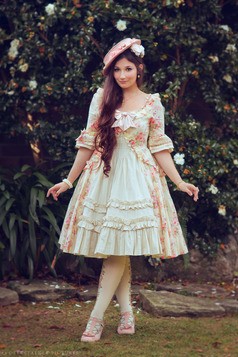
When wearing a Classic lolita look, there are quite often solid color pieces, florals, stripes, and prints featuring motifs like crowns, crests, antiques, animals, architecture, and reproductions of old master paintings. Animals and fruit prints in classic Lolita tend to have a realistic or antique look to them, as opposed to the more cartoon or fantasy like styles favored by sweet Lolita.
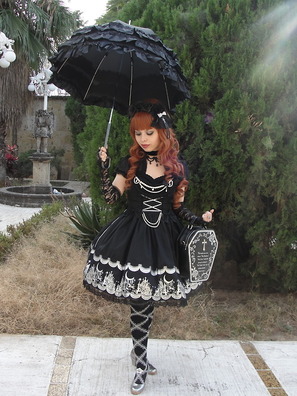
Gothic lolita dress mostly in black, but they can dress in white, or jewel toned as well. Crosses, stained glass, angels, coffins, and cemeteries are all motifs quite often used. There are far fewer bows than sweet or classic, and lace is often abstract or features crosses or roses.
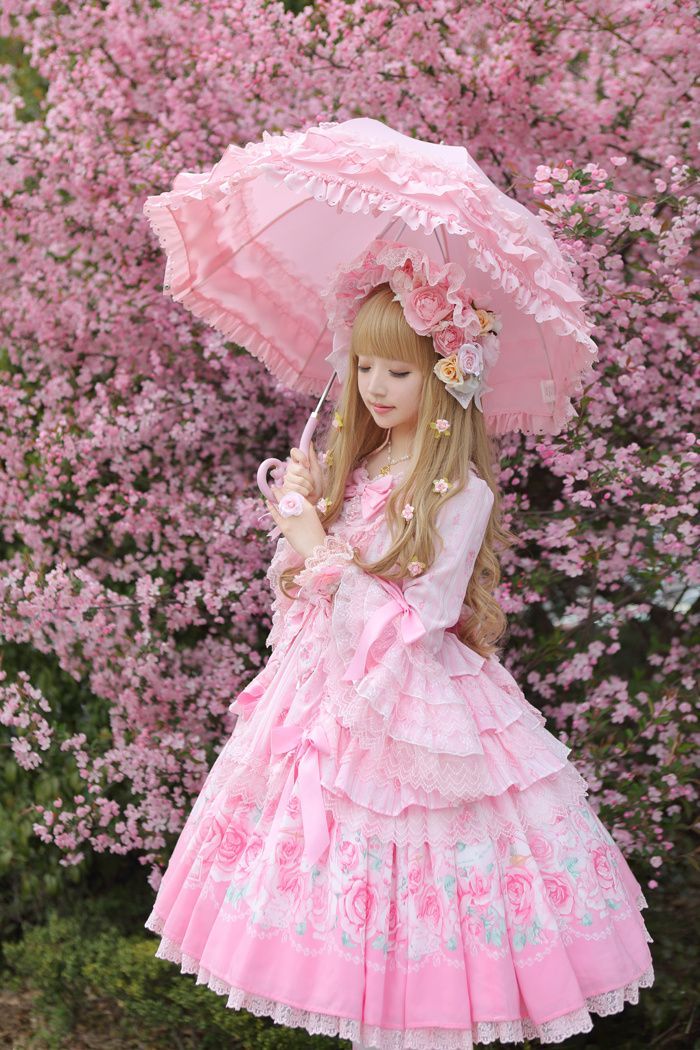
Sweet lolita often uses motifs like fruit, candy, animals, toys, stars and other cute things. It often features fuller, longer hairstyles than classic or gothic, and many Sweet Lolita wear wigs to achieve fuller, curly styles. The accessories often include over-sized plastic rings, necklaces and bangles in pastel or bright colors with cute motifs. Glitter, matte and glossy finishes and bright or pastel colors are common.
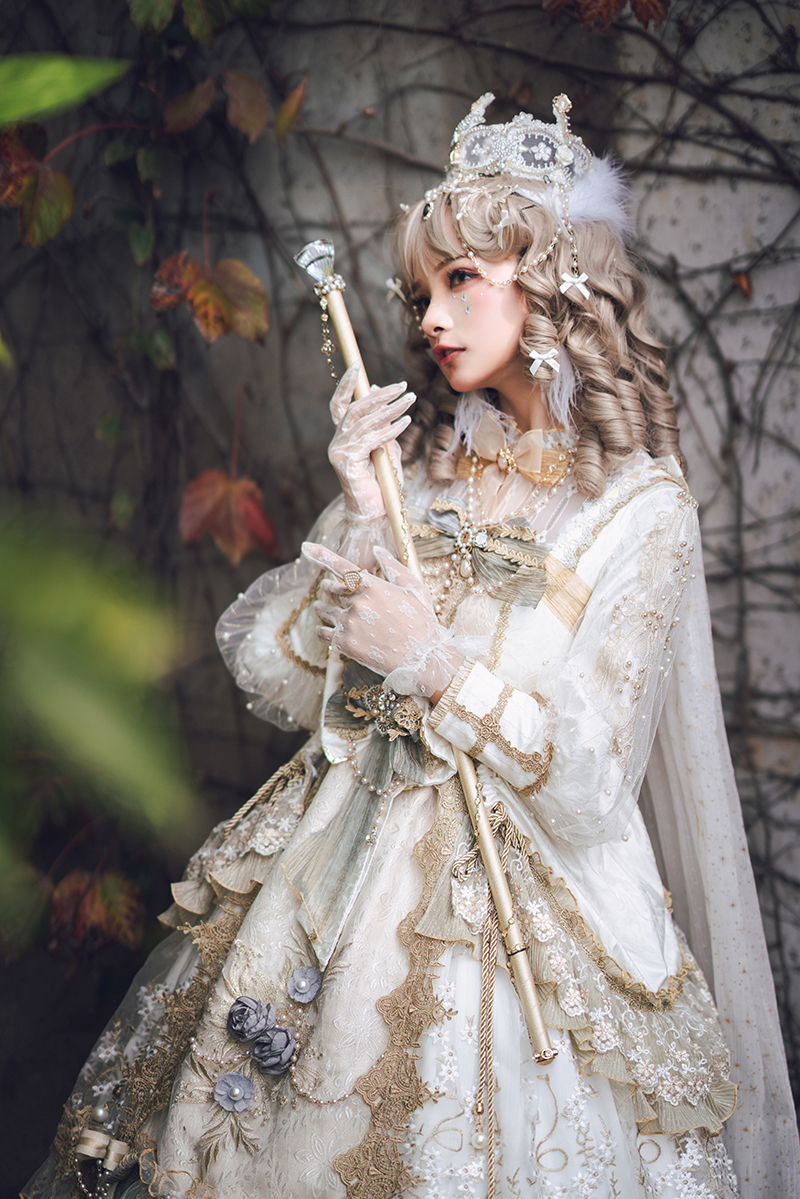
There are many other, lesser known styles of Lolita, and we will list a few of them below with a small explanation.
Hime Lolita is a Lolita that dresses like a princess, often with the dress looking like a ballgown and the girl wearing a crown.
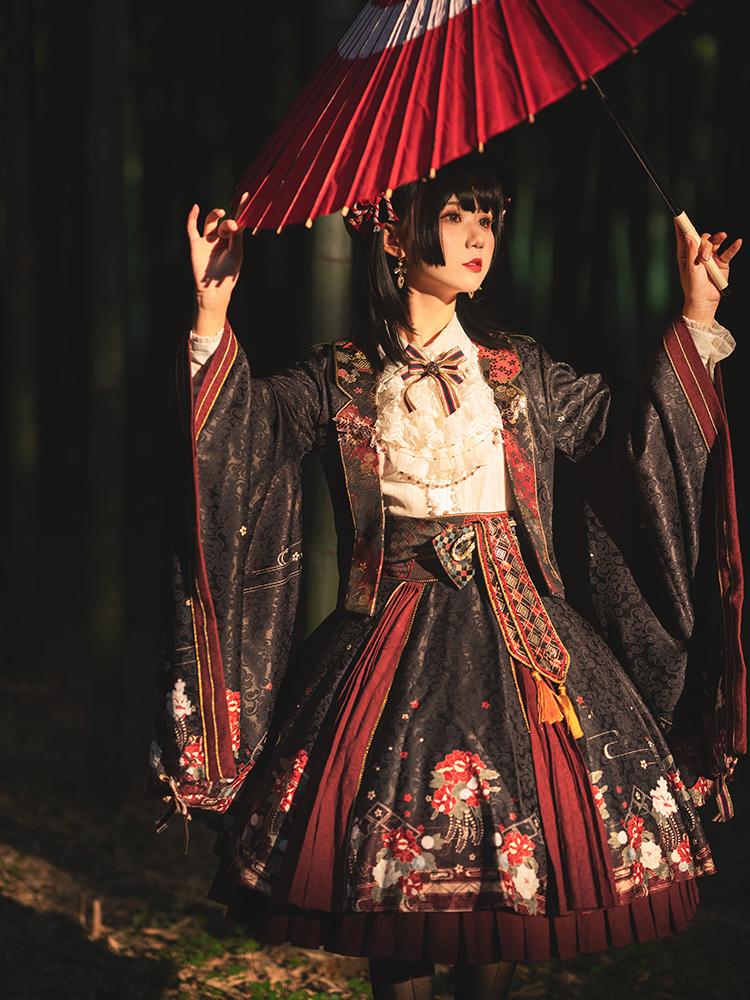
Wa Lolita is Lolita which combines aspects of traditional Japanese clothing (like Kimono) with Lolita. It is similar to Qi Lolita, which combines traditional Chinese clothing with Lolita.
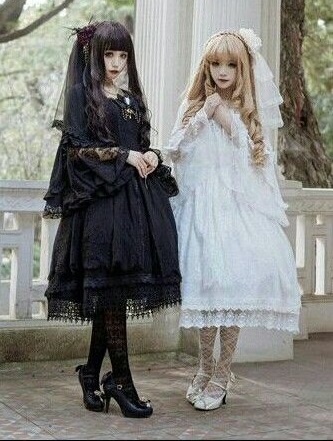
Kuro Lolita / Shiro Lolita is a style in which two friends often go out together, the one as a black lolita, the other as a white Lolita. Shiro is Japanese for White and Kuro is Japanese for black. Shiro Lolita is a monochromatic lolita style where everything is 100% white. White dress, white accessories, white shoes, the whole nine yards. Kuro is Japanese for black and it's the same idea. Everything is black; accessories, clothing, shoes,etc.
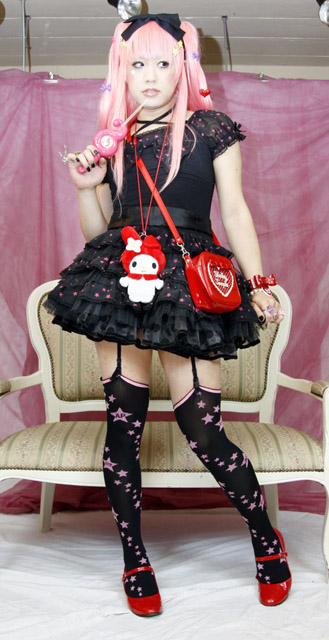
Ero Lolita (erotic style) is a Lolita style that is much sexier than the others, in that there is more skin visible. Most Lolita styles cover as much skin as possible by wearing long sleeves, high necks and knee- or thigh-length socks. Ero (or Sexy) Lolita is not in any way extremely naked of over the top sexy, but there are for example short sleeves and short socks.
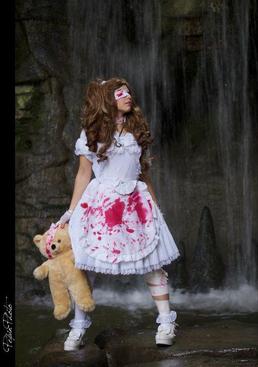
Guro Lolita (grotesque style) is a style in which a Lolita portrays herself as being attacked or wounded, by adding bloodstains on her clothes, ripping them.
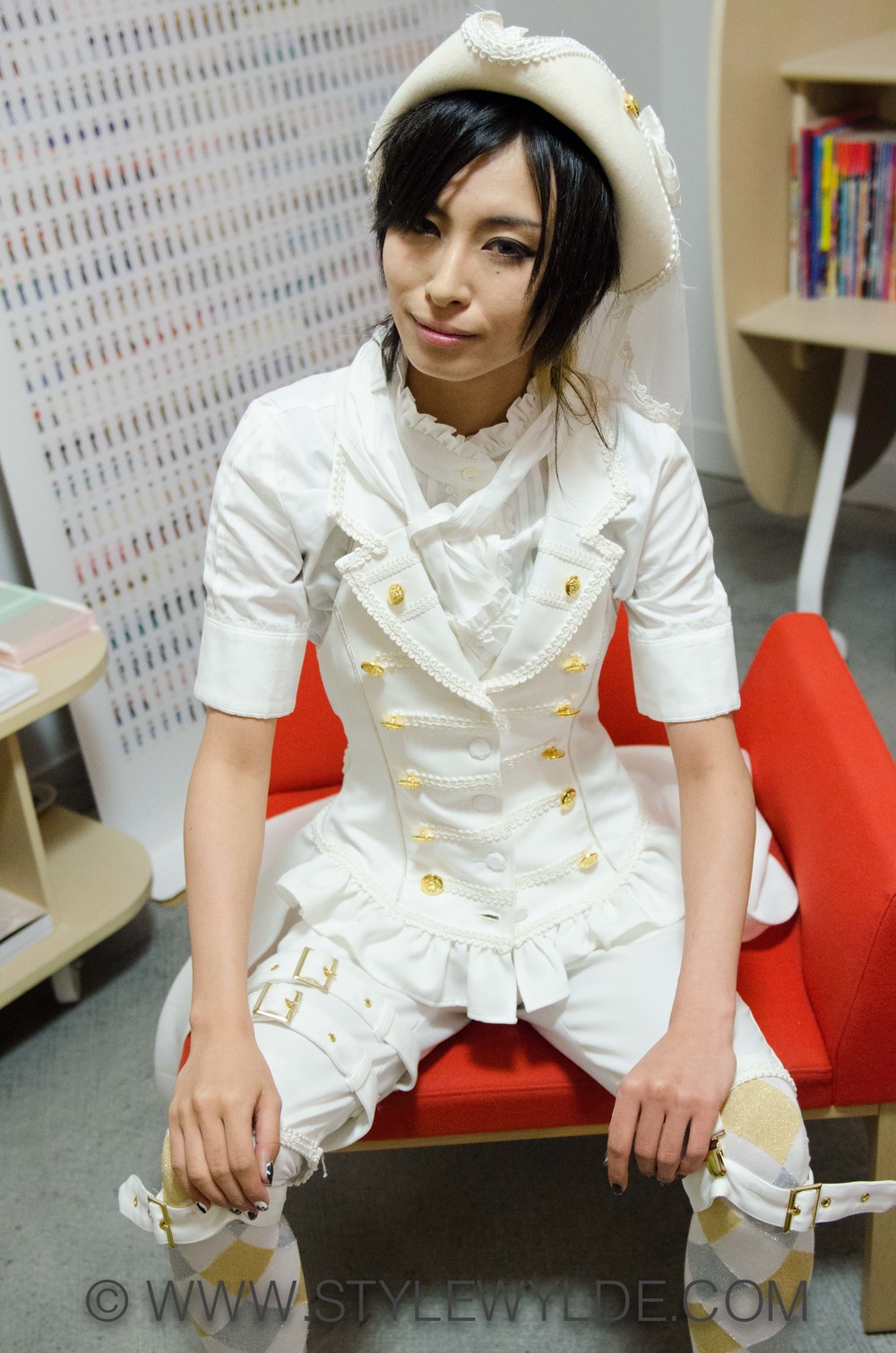
Ouji is a male Lolita style, so either a girl dresses up as a boy-Lolita, or a boy wears this style, often to look like a prince.
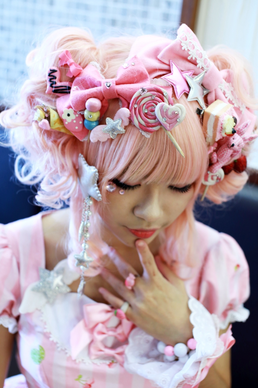
OTT means over-the-top and is used to describe any style that has an over-abundance of thematic accessories, details, and skirt and hair volume. The most popular OTT style is Sweet Lolita, but any style can be referred to as OTT if it features over-the-top stylings.
Survey
Interactive chart of the results made with Tableau Public
In order to construct a general perspective of the Belgium public on Lolita fashion we conducted a survey through Google Forums. This resulted in a sample size of 93 respondents, in which 58 female and 35 male respondents, ranging mostly between the 18 and 25 years old with 23 respondents aging above 25 years and 6 people under the age of 18.
Through the survey we were able to conclude that 39 respondents were aware of the fashion style Lolita, whilst 25 respondents had a vague idea and 27 respondents had no idea of what Lolita might be. This gave us an insight on how familiar our sample is with our survey topic. As our sample generally consisted of people aged between 18 and 25 years old, the responses were what we had expected, with a small majority aware of the subculture and an equal amount of neutral and negative responses.
Additionally, we noted that from the respondents that answered having an (vague) idea of what Lolita is the vast majority replied becoming aware of Lolita through internet and/or social media. As Lolita fashion has been appearing in media such as anime, manga and YouTube, the spreading of such media in the West indirectly caused Lolita to become more noticeable to people in the West as well through online sources. The answer of internet and social media being the dominant choice here was also within our expectations.
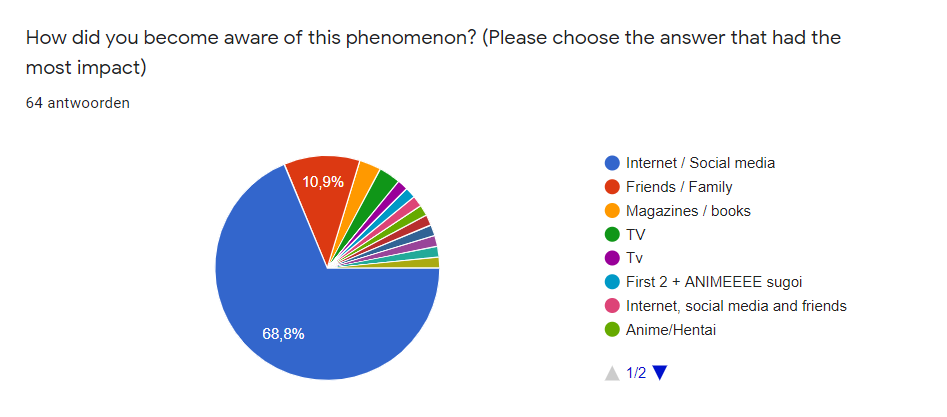
It was, however, interesting to observe the perspective of the respondents. We asked the people whether they perceived the Lolita lifestyle as positive, negative, or as neutral. This resulted in mainly neutral responses, explaining reasons as Lolita being a fashion choice with no deeper meaning behind, or freedom in the way one expresses themselves. Whilst most answers were positive, there were noticeably two negative perceptions, reasoning that Lolita fashion is "weird, not normal" and stating that "the term Lolita depicts underage girls as sexual objects". We will, however, not disclose the possibility that the medium through which Lolita fashion is depicted is considered normal for everybody.
Furthermore, we ventured on the question why people would think Lolita dress the way they do. We can conclude from the responses of the people who know Lolita, that the most chosen answers include 'to express oneself', as well as 'for cosplay purposes' and 'for fashion purposes'. This was interestingly different from our expectations. We expected to receive more answers aiming towards fashion purposes, but this was only the third chosen answer. Other answers included things like 'fulfilling sexual fantasies', which was not within our expectations. For respondents who were unaware of Lolita, by a small margin, 'for cosplay purposes' was the most chosen answer. This was an expected choice, as one could easily mistake Lolita, which has a resemblance to anime clothing, for a costume and thus evoke the idea of cosplay. Without knowledge of Lolita being a fashion subculture, one could assume Lolita dress to match an existing (fictional) character, instead of the true purpose of Lolita, being to realize their ideal identity.
Responses of people who were aware of Lolita
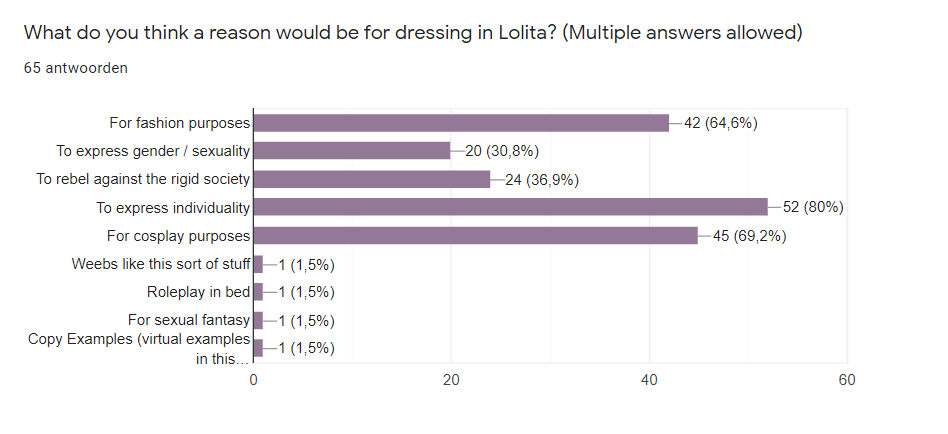
Responses of people who were not aware of Lolita.
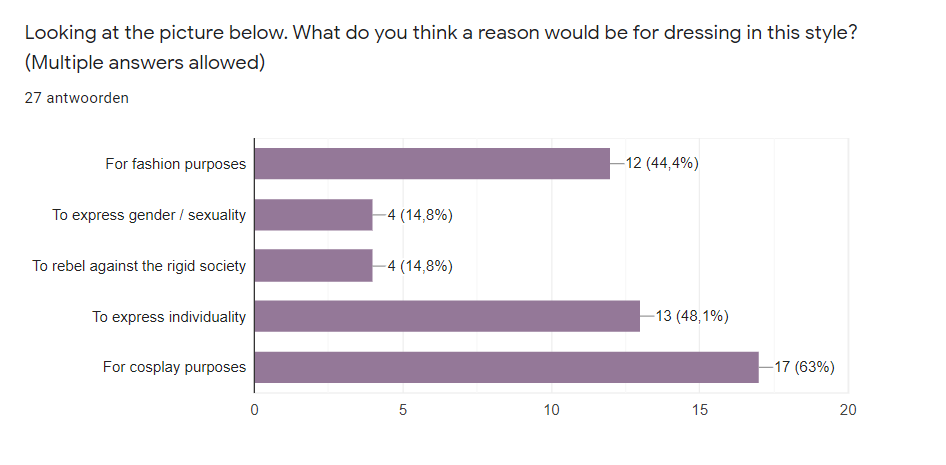
Additionally, whilst analysing the responses given in our survey we stumbled upon various media talking about the reasons of dressing in Lolita by Lolita themselves. YouTube Channel 7U2 (https://www.youtube.com/watch?v=W0QSyv8tEgg)created a short documentary in which reasons such as confidence, individuality and religion were mentioned. At the same time, YouTube channel AskJapanese (https://www.youtube.com/watch?v=iSQNaLkioS0&t=11s)
conducted an interview with popular Japanese Lolita models, reasons such as how cute it made the person feel and how they liked how they looked after dressing in Lolita were generally the answers given. This corresponds, in a way, to our survey answers as to why people in the West would think Lolita dress the way they do. Comparing our results to the reasons in the video's it would not so much be for cosplay purposes, although one could argue that they dress to create a different version of themselves which could be interpreted as cosplay.
Lastly, we gave our respondents a list of popular Lolita styles and asked them which Lolita style they are familiar with. From this we can conclude that Sweet Lolita and Gothic Lolita were indeed the dominant styles known. As these two styles are also most commonly known in Japan, we thought this might be the case here in Belgium as well. Interestingly, Classic Lolita is also widely considered as one of the main three styles (together with Sweet and Gothic). This was not the reflected in our survey results however.
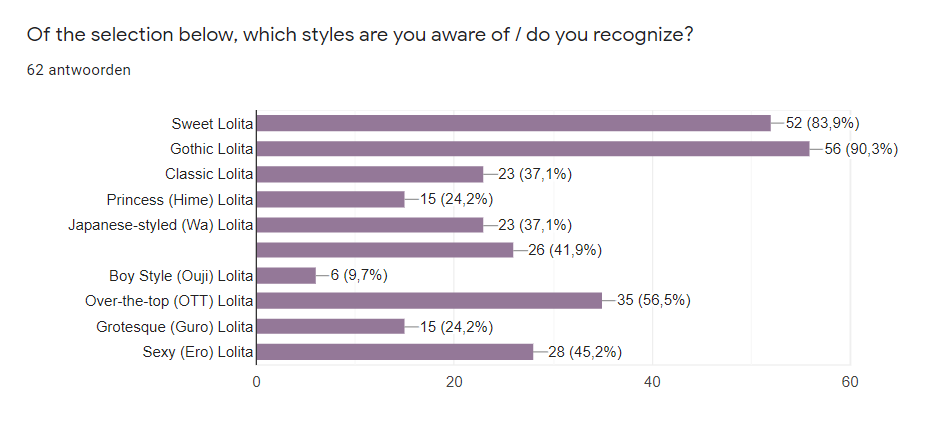
(the blank result was White and Black (Shiro and Kuro) Lolita)